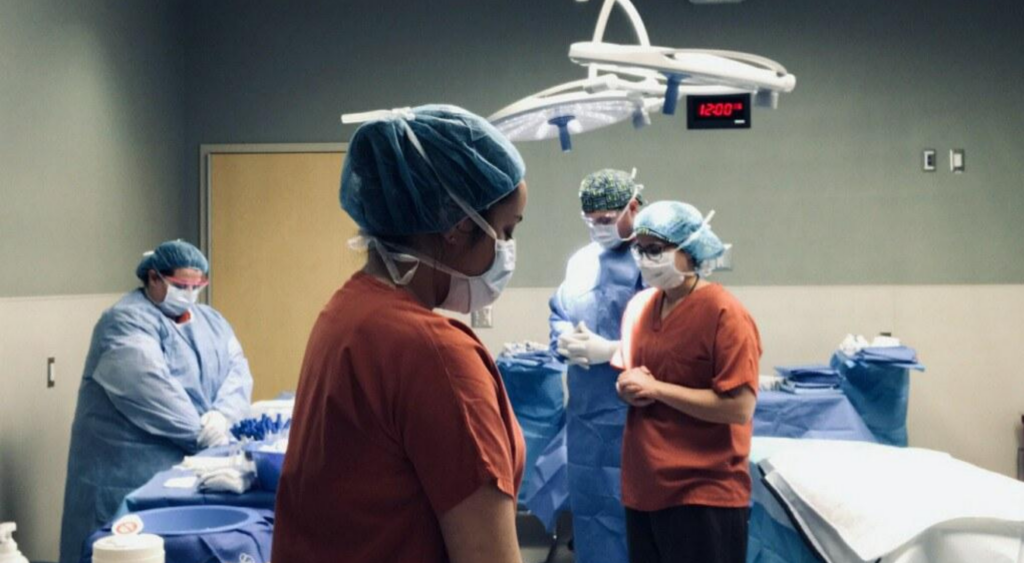Making the decision to become an organ donor upon your death is the first step in the organ donation process. But before a patient can become an organ donor, several things must happen.
After every attempt to save the patient’s life has failed, a doctor will determine and declare a patient dead when either their brain stopped working (brain death) or their heart and lungs stopped working (circulatory death). Organ donation organizations do not declare death.
Brain death happens when a patient is on a ventilator (a machine that forces air into their lungs to help them breathe) but their brain stops working, even at the most basic reflexive level. Because their body is still on a ventilator their organs are kept healthy and functioning for a short amount of time, allowing the opportunity to donate them to a person waiting for a life-changing transplant.
Circulatory death occurs when a patient has a permanent brain injury and there is no hope for recovery. The family makes the decision to end life-sustaining measures, the machine support is withdrawn and shortly after their heart stops and a doctor pronounces them dead. In this situation, organ donation happens within minutes after death has been determined.
All hospitals are required to contact organ donation organizations like Gift of Life Michigan following the death of every patient, or when brain death testing begins. Gift of Life checks the Michigan Organ Donor Registry, a database of registered donors, to see if the patient had signed up to become an organ donor.
Next Gift of Life discusses the donation process with the patient’s family. If the person signed up to be an organ donor, the donation process moves forward. If they’re not, the next-of-kin is asked to decide on their behalf. The family is given time to think and ask questions before they make a decision. If they say yes, the process can then proceed. The process is easier for families if the patient has talked with them about their decision to donate.
 Following the discussion and the approval to proceed with donation, Gift of Life tests to see if the patient’s organs are healthy enough for donation and transplantation. The patient is kept on a ventilator while testing begins. This includes drawing blood to test for contagious diseases, imaging tests (CAT scans, X-rays, etc.) and speaking with their family about their medical history.
Following the discussion and the approval to proceed with donation, Gift of Life tests to see if the patient’s organs are healthy enough for donation and transplantation. The patient is kept on a ventilator while testing begins. This includes drawing blood to test for contagious diseases, imaging tests (CAT scans, X-rays, etc.) and speaking with their family about their medical history.
The results from the tests are put in a national database, without revealing the donor’s identity. The database matches them to potential transplant recipients based on blood type, tissue type, need and location. The sickest recipients and those who have been waiting the longest are given a higher priority. Once organs are matched with a recipient, scheduling the donation surgery is next.
Gift of Life coordinates the entire donation and organ removal process, including arranging a time that works for everyone involved, including the donor’s family, recipients and surgeons. The donor may remain at the hospital where they had received their care or may be moved to Gift of Life’s Donor Care Center in Ann Arbor for their surgery.
 After a moment of silence in honor of the generous donor and the lifesaving gifts they are giving, surgery begins. Organs are removed, cooled and preserved with special solutions. The surgical teams then return to their transplant hospitals with the recovered organs to perform the transplant surgeries. Often, recipients are prepped for surgery and under anesthesia while the donor’s surgery is taking place to minimize the amount of time the organ is outside of the body, increasing the success of donation.
After a moment of silence in honor of the generous donor and the lifesaving gifts they are giving, surgery begins. Organs are removed, cooled and preserved with special solutions. The surgical teams then return to their transplant hospitals with the recovered organs to perform the transplant surgeries. Often, recipients are prepped for surgery and under anesthesia while the donor’s surgery is taking place to minimize the amount of time the organ is outside of the body, increasing the success of donation.
Once the organ donation surgery is complete, tissue and eye donation take place if the person meets criteria to become a tissue and eye donor. The entire donation process may take between 24-36 hours.
Gift of Life provides support to the donor’s family throughout the process, including support after the donation process is complete, and ensures that donation doesn’t interfere with how they plan to honor their loved one at a funeral or memorial service. At a later date, basic information about the recipients is given to the family of the donor.
To join the 4.5 million Michigan residents who have made their decision to become organ, eye and tissue donors known, visit golm.org/register. To learn the facts to make an informed decision, visit golm.org/faqs.








